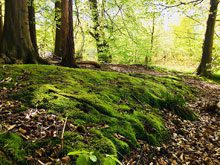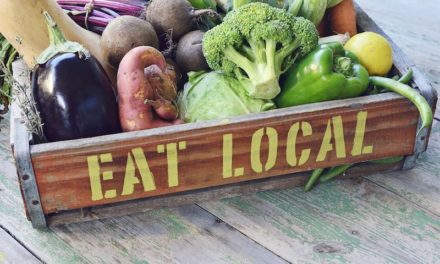 It’s been a few seasons now since we’ve grown a garden for our own produce at the farm. There was a time when we grew sweet corn, butter beans, purple hull peas, lettuce, onions, potatoes, tomatoes, okra, collards, kale, strawberries, native grapes, herbs. We’d often experiment with trying new varieties or new crops altogether, sometimes adding them to the regular list of crops planted.
It’s been a few seasons now since we’ve grown a garden for our own produce at the farm. There was a time when we grew sweet corn, butter beans, purple hull peas, lettuce, onions, potatoes, tomatoes, okra, collards, kale, strawberries, native grapes, herbs. We’d often experiment with trying new varieties or new crops altogether, sometimes adding them to the regular list of crops planted.
My father was the chief organizer, planner, upkeeper, and harvester; after his death, much of the impetus for doing the garden faded, and the time and effort in caregiving duties for my mother left little energy for the vegetable garden, although the grapes, the blueberries, and the pear trees remain and continue to provide for us.
I miss that garden – at least, I miss its glorious bounty. But our world has changed a bit since the olden days, and now it is quite possible to get wonderful, locally grown produce from local farmers, from CSAs (Community Supported Agriculture programs), from farmers markets. Each time I drive home past Seabrook, I take enormous pleasure in watching the progression of crops grown at the Rest Park Farm – returning the hundred-year-old McLeod truck farming acreage to its original productiveness.
In fact, this whole area around Seabrook and Lobeco – indeed, much of the Lowcountry – has spent a great many years serving the country, providing fresh produce for consumption wherever the trains and the trucks went, once as central to the food chain as California has been more recently. There is, in fact, increasing recognition that this historical role may once again be capitalized upon as climate change alters the availability of water and the growing conditions in the west.
But not all the agricultural potential is concentrated on the model of massive-scale BigAg, despite newcomers from away such as the Idaho potato producer who bought huge acreage recently in Aiken County in order to gain access to unlimited amounts of water from the little South Edisto River – sufficient to drain that world famous black-water river to less than a trickle. Even though their move was supported by the state’s commissioner of agriculture and by the Farm Bureau, sufficient public outcry was raised that the farm agreed in writing to severely limit its draw of water from the river (although, state law still permits unlimited withdrawal once a farm is permitted to withdraw surface water).
No, much more exciting to me are the efforts by a number of dedicated foodies, historians, writers, farmers, and cultural researchers to rediscover the tastes and experience of foods lost to us because of modern methods of agriculture. Perhaps the widest-known such effort has been the rediscovery of the original Carolina Gold rice, the grain that made the first truly fabulous fortunes in this colony, which was famed for its fullness of flavor and its texture.
Carolina Gold rice was thought lost to agriculture, but diligent research and good luck produced a small amount of the rice seed, which was carefully planted, grown, collected, replanted, reseeded, and so on, until a crop sufficient for limited milling and distribution was harvested. Vital to the whole process from beginning to end were people like Dr. Richard Schultz of Turnbridge Plantation and Glenn Roberts of Anson Mills. Carolina Gold now ranks among the most sought after rices available.
Carolina Gold’s reintroduction is a part of a much larger movement toward recovering lost flavors and forgotten culinary treasures. Recently, the nearly-lost Purple Ribbon variety of sugarcane was reintroduced to Sapelo Island, where the first sugarcane in America (Purple Ribbon) was grown. This reintroduction was made possible by more diligent research and networking and extremely meticulous cultivation and genetic examination by people such as Dr. David Shields, a renaissance man (a term more appropriate than “jack-of-all-trades”) of English letters at the University of South Carolina and a food historian; and Dr. Stephen Kresovich, a renowned geneticist at Clemson.
Sean Brock, the internationally acclaimed Charleston chef, is also part of this movement. Recently, efforts have been initiated to locate, produce, and utilize the nearly-lost benne seed. Many people know that the word “benne” refers to sesame, and old cookbooks and diaries frequently contain ecstatic references to the joys of benne wafers, benne cake, benne cooking oil and salad oil. But this original sesame, of African origin and grown widely in the South, was replaced in the mid twentieth century with a hybrid producing a higher oil content. Sadly, this hybrid had removed the qualities of taste in search of that higher oil content. Consequently, modern efforts at making the old recipes taste nothing like the originals. At his restaurant, Husk, Brock has introduced recipes both classic and modern using the traditional, now-available, benne in all its forms: as seed, as, benne cake, and as oil.
In the middle of the nineteenth century, seed catalogs listed the Bradford watermelon as having the best flavor and a superior texture; the Bradford remained a choice variety well into the early part of the twentieth century, perfect for home growers, although it did not ship well. Once the hybridizers developed melons that had very thick skins – ideal for shipping in great quantities – seedsmen began carrying exclusively the new varieties, whose flavor had suffered in the effort to make them tough.
Through accident, fortune, and serendipity, in 1997 a South Carolina farmer came across a hundred year old reference to the Bradford watermelon. The farmer, the son, grandson, great grandson of farmers, was Nat Bradford, and his family had been continuing to grow the old watermelon and faithfully save the seeds for generations, even though they had disappeared from commerce.
Good luck would have David Shields encounter Nat Bradford, and pretty soon introductions were made to Sean Brock, to Glenn Roberts, and eventually to the world at large. The Bradford watermelon is once again available in season; but, perhaps more significantly, the melon is the perfect base for producing watermelon molasses and other out-of-season products. The Bradford graces famous tables now and even a number of fine drinking establishments, as the watermelon molasses has become the ingredient of celebration in cocktails and other recipes.
At the Slow Food Movement, and in our country, Slow Food USA, endangered classic food products are listed for preservation efforts in the Ark of Taste. Some 1100 species of plants, breeds of animals, processes, and even minerals (Hawaiian Sea Salt) are included, more than 200 of them American.
Slow Food is a foodie’s dream, with treasures to yearn for and seek out; and it is a powerful resource for small growers, a guide toward exciting, hard-to-find, delicious products which one can search for new crops to grow for a demanding market. It is one way to preserve history and to create a niche for oneself in a complicated and increasingly sophisticated market.
So, if my commitments and my energy level permit, I may return the old farm to a new effort at growing some of the old reliable standbys (although the last few years of trying to grow tomatoes in our infested soil has made me think that crop is futile to try); and I will certainly venture a little more broadly with trying some exciting and unusual treasures from the Ark of Taste. And I’d be foolish not to try such commercially impractical crops such as lady peas or rice peas, and some of the old corn varieties which weren’t bred to be sweet as a candy bar but are full of that old corn flavor.
Maybe I need to re-convert the old mule barn back to its original purpose!
Above: Bradford Watermelons







